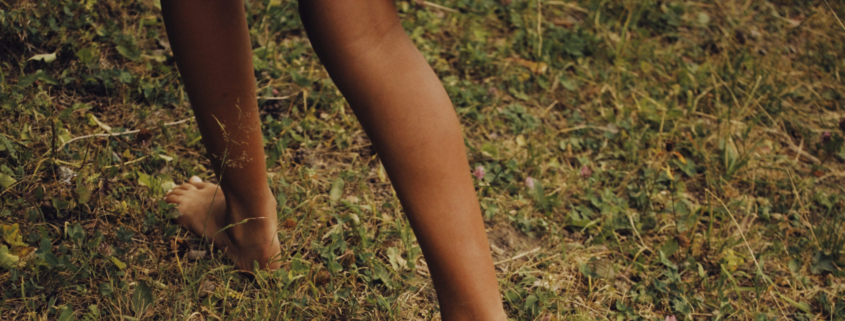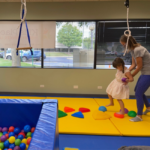Did you know standing outside barefoot is beneficial and has a scientific name? Grounding, or earthing, is the practice of standing on the ground barefoot to absorb the Earth’s natural electric charge.
According to the National Library of Medicine, grounding produces positive effects on inflammation, immune responses, wound healing, and can be beneficial in the treatment of chronic inflammatory and autoimmune diseases.
While more research is needed, connecting with the earth has also been shown to improve mood, reduce anxiety and stress, promote sleep and relaxation, regulate the nervous system, and improve circulation.
How to practice grounding:
- Go outside without shoes or socks and stand/sit/walk on the grass, soil, sand, or even concrete.
- Focus on connection. Find a time and place that allows you to feel relaxed and present.
- 20-30 minutes is the optimal time frame, but even shorter sessions can be beneficial!
For children, specifically, spending time outside can help improve sleep, build confidence, calm and reduce anxiety, and promote sensory engagement.
While it might be tough to get a kid to sit or stand still barefoot, there are several ways to get them engaged so they can benefit from grounding.
- 5-4-3-2-1 Method. Have your child identify five things they can see, four things that they can touch, three things that they can hear, two things they can smell, and one thing they can taste.
- Mindful Walking. As you walk, prompt your child to describe what it feels like to have their bare feet on the ground. Is the ground rough? Bumpy? Cold?
- Physical activities. Play a game barefoot, dance in the grass, or do yoga!
Please ensure you are using proper sun and weather protection while outside. Always check to ensure the spot you plan to practice grounding is safe to do so.
Want to learn more about how playing in nature is beneficial? Check out our post “Benefits of Playing in the Rain.”




